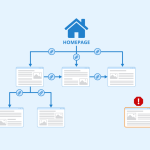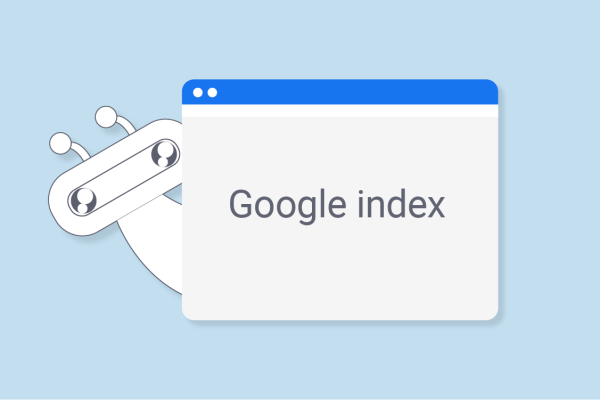What is AMP? Benefits of AMP for SEO
Google AMP is an open source website publishing technology that allows you to create a website that loads almost instantly on mobile devices. AMP stands for accelerated mobile pages. Google created AMP for businesses to make slow-loading websites faster.
Accelerated mobile pages (AMP) are simplified versions of HTML and other web components that help speed up the loading of mobile pages. In previous years, when a mobile device was connected to the internet for the first time, its page speed was too slow for mobile users to navigate comfortably.
Although it has been working on the mobile process, which has been used quite a lot recently, to create a user-oriented website, it could not help the website owners with some external advertising systems on their websites. There are more mobile users on the Internet today than there were 3 years ago, and Google has improved website speed and mobile-friendliness as part of its search ranking algorithm. If you don’t want to reject thousands of mobile users who might find your site, you should find developers who make your site mobile-friendly and user-oriented. Google has enabled AMP to help speed up mobile browsing.
What Does AMP do?
The question of what AMP does is actually related to what is AMP in general. AMP makes your mobile pages faster and offers a faster web landing page to users in today’s technology. Generally speaking, speed and mobile compatibility are also called the parts that determine the fate of your site, as they are very popular and important factors in SEO and Google search rankings. With the changes Google made in the last update, it has become more important to mobile users. Therefore, any website owner should have mobile compatibility. Since AMP is Google’s platform, it finalizes its transactions by considering the compatibility of AMP with search results.
If users prefer mobile devices more, Google wants to show fast-loading websites higher. Search for any keyword and find top ranking sites on mobile devices, even in your desired industry or news sites. Google flags AMP compatible sites so you can see that most of the top ranking sites have AMP installed.
AMP has other advantages as well, it also allows your website speed to bring positive results to your user statistics. Bounce rate and user engagement will always increase when you make sure your website is fast and supports mobile users. If the loading time is too long, users are more likely to leave your website and visit other pages, as long as the website waits for a long time in the browser.
How to Use AMP?
Before moving on to the question of how to use AMP, the huge increase in the number of AMPs operating today is mostly directly proportional to the mobile-friendly design of websites. These changes have emerged with the rapid developments in technology and the desire to use more phones. For most of us, the desktop computer is a thing of the past, and since everything is done instantly from mobile, we can get the information we need from anywhere without being tied to a single point.
If you are not sure whether you need to convert your web pages to AMP, you can find answers to your questions by reading our entire article. What kind of content you produce, how it is used, etc.
The plugin works by automatically integrating AMP into your website and offers Google Analytics support, so you can still stay on top of your performance and track the necessary information. The use of AMP is mostly done through plugins. With the WordPress plugin, you can install and make your site mobile-friendly without even having to follow it. You should definitely use AMP, which is very easy to use and interface.
WordPress AMP Installation
The main reason why users prefer AMP is that it is both easy to use and provides great advantages. If you have WordPress with easy interface, it is much easier to include AMP using a plugin. The automatic AMP plugin will be activated after you enable AMP on your WordPress site.
As we said, you just need to install it, Google will scan it on its own, so you don’t need to do anything else. But don’t be hasty here, it may take some time for your pages to show up in searches, but after a few weeks you’ll come across them while searching on your mobile device and then you can be happy. You can make all or some of your pages compatible with AMP.
Step 1: As we mentioned in the picture, you will need to install the AMP plugin on your site in order to set up WordPress AMP pages. If you haven’t installed it before, it is important that you download and install it beforehand.
Step 2: Here we decide which parts should work in AMP. In the AMP settings “General” menu, select Reader from the Template Mode section and edit the AMP settings from the Supported Templates section.
Step 3: Actually, that’s all you need to do. Then it remains to adjust the color parts. The next step is to complete the AMP process by making your header color settings on the AMP design page. In this way, you will easily handle the installation.
How is AMP Test Done?
It is wrong to test before making AMP adjustments. After making the setup settings we mentioned above regularly, we can move on to the testing phase. The AMP test phase shows whether your transactions are reflected correctly. You can do this with Google’s own tool, the Google AMP test tool.
The first thing you need to do in the Google AMP Test tool is to enter your website address. Then you click the Test URL button to make the controller work. You may have to wait a bit here, and then the results will appear.
Add /amp/ to the end of your site address or any of these pages. Then click the “See Connected Amp Version Results” link on the screen to perform the amp redirect. You will have completed the AMP installation, but if you want your site pages to be indexed immediately instead of waiting, you can add these pages to the index manually. It’s possible to do this as long as you don’t exceed the daily indexing limit.
















